Home »
Misc »
How to coach a kids basketball team
How to coach a kids basketball team
Coaching Youth Basketball -- Tips, Drills, Plays, Philosophy, Tactics
You'll be teaching habits that will stick with these kids for the rest of their lives. And whether you like it or not, you'll be setting an example and teaching kid's lessons about life (good and bad). Kids are impressionable. They pick up on things.
You have an obligation and responsibility to teach them the right things - in both basketball and life.
When you think about it, teachers would do anything to get the enthusiasm that you get from your players. Kids actually like and want to play basketball.
Your players look up to you. They listen to you. And you have an amazing opportunity to make a POSITIVE impact on their lives!
You have a very important and rewarding job!
In this section of our website, we'll provide you with links to a variety of youth coaching tactics, plays, drills, and tips that will help
you become a better youth basketball coach.![]()
The articles discuss very important concepts to help you succeed. So read through each article, starting with the first one at the top.
If you don't have our free eBook yet, the first thing you should check out is our FREE Basketball Drills ebook. It includes 72 of some of our favorite basketball drills and it includes youth section so you can easily find the drills that apply to you.
We also offer videos with 60+ Youth Basketball Drills and Tips For Coaching Youth Basketball.
When working with young kids and running basketball drills, there are three very important concepts you need to consider:
Picture by
Shane Pope1 - Kids need to be highly active!
Just by using fast paced drills and keeping things moving, your players will have more fun and get in better condition. Your kids should be breathing hard and their hearts should be pumping. It's good for them!
It's good for them!
Avoid standing in lines as much as possible and keep the ball in their hands as much as possible.
2 - Kids want to feel successful!
With very youngs kids, competition doesn't always serve as a motivator. You should always provide activities that help them build their skills and confidence. Strive to focus on the learning process instead of measuring up to those around you.
You'll want to avoid adding pressure and competition until the players have developed their skills, confidence, and become proficient with the basics.
Put them in situations where they can succeed.
3 - Kids want to have lots of fun!
This is an important stage for young players and your actions could determine whether they enjoy sports or not.
It's important to make things fun so they can improve and become confident.
Youth basketball drills don't have to be boring. Almost any drill can be modified to provide high activity, high success, and high enjoyment.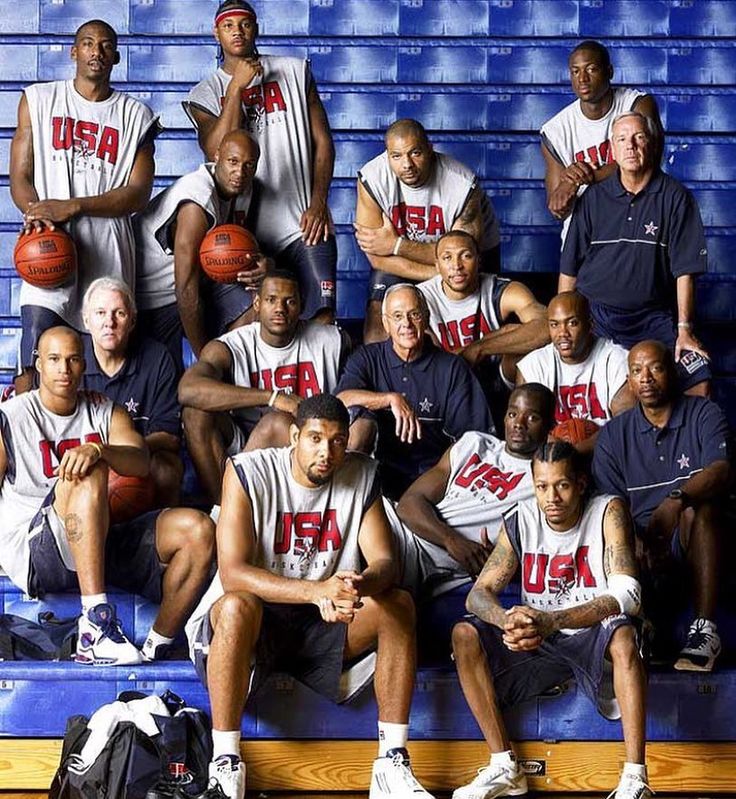
Youth Basketball Offenses
I believe that using a very simple motion offense is the way to go for youth teams because it teaches them how to move and the players will begin to learn how to get open and play the game.
Motion offense also allows you to spend more time teaching fundamentals and skills (which is very important for young players).
The challenging part about motion offenses is that there are SO many options that it's hard for players to know what to do. But you can easily solve that problem by making simple rules and starting with the basics.
For example, you might want to just with just a couple simple options for your motion offense. You could start by teaching the players proper spacing, away screens, and v-cuts. Once they master those skills and get VERY proficient at cutting properly and setting good away screens, then you can start adding more options and building on your foundation.
You can add ball screens, rolling, and so on.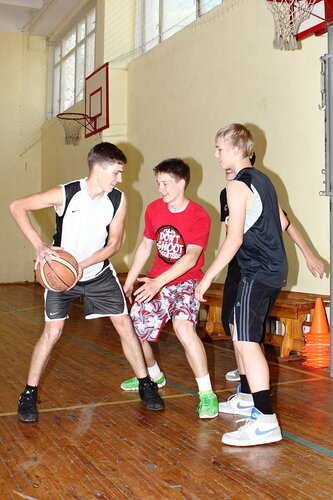 Just don't go too fast! Make sure they have good fundamentals before you start adding stuff.
Just don't go too fast! Make sure they have good fundamentals before you start adding stuff.
You can learn about developing motion offenses by looking at these resources:
Offensive Theory & Introduction to Basketball Offense
Teaching Basketball Motion Offense
5 Out Cutters Offense - Easy to teach and it is a great building block for the motion offense.
You can also try this very simple patterned offense that you can use as a play or your entire offense:
Youth Offense - Michigan
Press Breaker Offense - Breaking the Press in Youth Basketball
3 Critical Player Development Tips For Your Offense
Youth Basketball Plays
When it comes to teaching plays to youth basketball players, it is typically better to teach them concepts on how to play the game of basketball.
- Triple Threat - How to get in triple threat position every time a player catches the ball.
- Footwork - Quick stops & pivoting
- Cutting - Basket cuts & back cuts
- Screens - Off the ball & On-ball
- Eventually, reading screens.
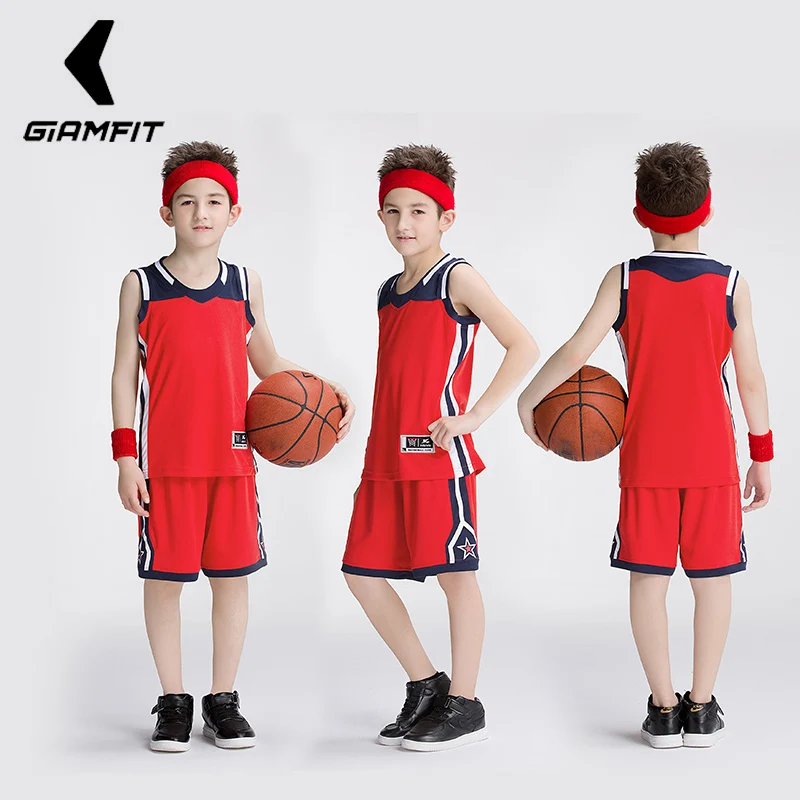
To read more on this topic, please read:
Youth Coaches: Destroy Your Playbook and Do This Instead
Should Youth Coaches AVOID Plays and Patterned Offenses?
Here are some very basic plays:
1-3-1 Cutters
Rolling
Swing Variation
Zone Shallow
Zone Overload
Quick Hitter Vs. 1-3-1 Zone
Best Overall Advice for Youth Basketball Coaches
1) Keep things fun!
Did you know that the #1 reason kids quit sports is because it's not fun anymore?!? It's very important to play plenty of games and keep a positive attitude.
Be positive and make things fun. Even if the kids get cut from the team or decide not play basketball at an older age, they'll still have a positive image of basketball and may continue to play it recreationally when they get older.
If you act like a drill sergeant when coaching a bunch of 10 year olds, the kid will get a negative image of basketball and have negative emotional feelings when thinking of basketball.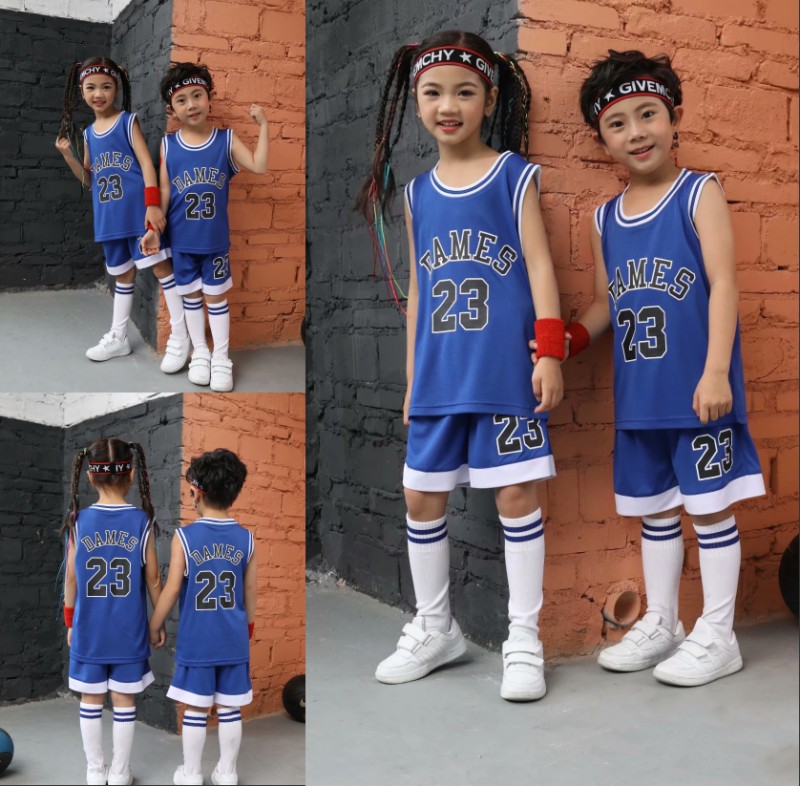 Kids will also get sick of basketball if they play TOO many games each year. As a result, they will not likely play basketball when they get older. It can even affect their feelings towards fitness in general. If a person dislikes fitness and becomes inactive, they are more likely to be unhealthy!
Kids will also get sick of basketball if they play TOO many games each year. As a result, they will not likely play basketball when they get older. It can even affect their feelings towards fitness in general. If a person dislikes fitness and becomes inactive, they are more likely to be unhealthy!
60+ Youth Basketball Drills and Games
2) Be Positive & Do NOT Correct Every Mistake!
Don't be too critical and stop them to make a correction on every mistake. Let them play and learn themselves. If you stop or correct them on every mistake, you'll get a basketball player with low confidence that is always unsure of what to do, instead of a confident player that reacts to the defense.
Now, if they continue to make the same mistake over and over and over, show the player a better way to do a certain thing. For example, if you see one of your players stand straight up every time they touch the ball and a defender crowds them and causes the offensive player to travel.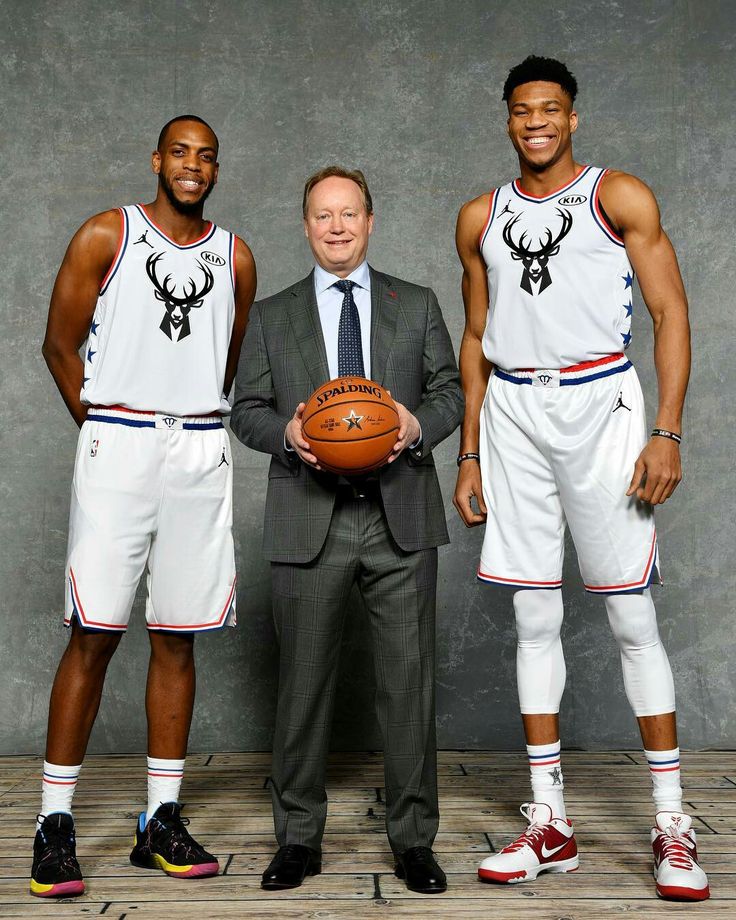 Say to the player, "Way to hustle, Johnny! Let me show you something that will help you when the defender crowds you. When catching the ball in this position, keep your hips back with your knees bent, and pivot. Be ready to attack. Then if the defender comes to crowd you, it will be easy for you to dribble right by him!" Notice, I did NOT focus on the negative and say "Stop bringing the ball up!"
Say to the player, "Way to hustle, Johnny! Let me show you something that will help you when the defender crowds you. When catching the ball in this position, keep your hips back with your knees bent, and pivot. Be ready to attack. Then if the defender comes to crowd you, it will be easy for you to dribble right by him!" Notice, I did NOT focus on the negative and say "Stop bringing the ball up!"
Don't focus on the negative. Focus on the way to help them. Let's be positive as coaches!
3) Allow your players to be successful!
Sometimes competition is not a motivator for young kids. However ALL kids need to taste success (and hopefully lots of it). Now this doesn't mean winning. It means getting better and succeeding in practice. Allow your players to run drills that they can succeed at and feel good about. Celebrate small accomplishments and successes with your players.
4) Teach life lessons in your practices!
Read this article about teaching life lessons and improving team bonding.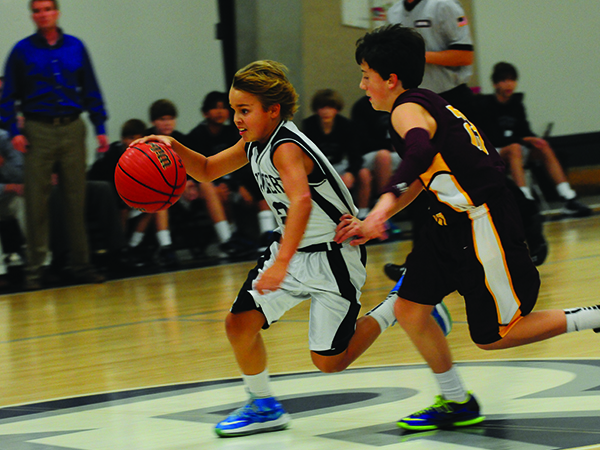
5) Don't worry about winning!
You don't have time to worry about winning. There's only time to do the right thing... If you do things "right", winning will eventually be a by-product of your actions. Be patient. True success takes time to do things right. It doesn't happen overnight.
You must first build a SOLID foundation for these kids to build on. Taking the time to build that foundation will cause you to sacrifice winning some games. Trust us. This is better for your players in the long run.
6) Avoid year-round basketball and play other sports!
There is a reason that NBA GM's don't like their ELITE, PROFESSIONAL basketball players competing in the summer World Championships and Olympics. It's been scientifically proven that playing a sport year-round leads to tired muscles and a tired muscle has a much HIGHER chance of injury. Now, if these PROFESSIONAL athletes with proper nutrition and training are supposed to avoid year-round basketball, don't you think that a DEVELOPING, young athlete (most likely without proper nutrition and training) should be avoiding it as well?!?
If you force your child to play, it can also lead to burnout, injury, and resentment of the sport or fitness
altogether. People are much more driven when they choose to do something they enjoy, rather than being forced to
do it. If you want your child to enjoy basketball, play GAMES with him when they want to, and watch
basketball-related activities with them. 9 times out of 10, kids enjoy sports that their parents enjoy if approached the right way.
People are much more driven when they choose to do something they enjoy, rather than being forced to
do it. If you want your child to enjoy basketball, play GAMES with him when they want to, and watch
basketball-related activities with them. 9 times out of 10, kids enjoy sports that their parents enjoy if approached the right way.
At this age, it is best to improve overall athletic ability which is done by playing multiple sports,
such as gymnastics, baseball, soccer, martial arts, football, track, volleyball, softball, swimming, and so on.
Keep in mind, that you want to have seasons for these sports. Avoid playing 2 or 3 sports at once and multiple practices on the same day. If you want to focus on one sport at age 16 or 17, GREAT. Not at age 10 or 11. And who knows what your child will take an interest in or show talent in at age 10? Most of the time, things change a lot in the next 6 or 7 years!
7) Don't press or play zone defense!
You can read why and get advice here.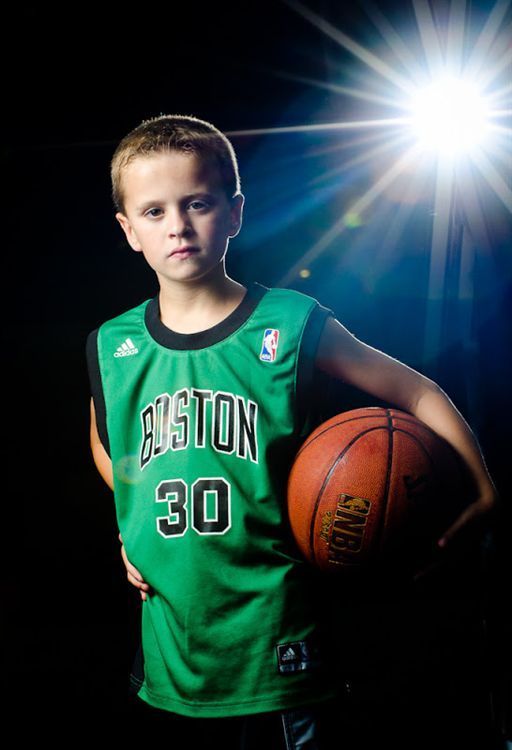
8) Use small basketballs and lower rims!
Using rims that are too high and basketballs that are too big will RUIN your players shooting form. They are NOT strong enough yet.
Do we send 6 year olds to Yankee stadium and start throwing from the big mound? No, we start with tee-ball, then parent pitch, then little league (close bases), and move up.
It's ridiculous to throw 5-10 year olds on a full size court with 10 foot rims and youth basketballs that are way too big! It's no wonder so many kids have horrible shooting form when they get to high school!
9) Teach the right things!
Just keep in mind that if you can teach your young players the following skills, then you should feel good that about what you accomplished and know that you're teaching your player the right things (that they need to be successful)!
Your young players should be able to:
- Dribble with their left and right hands equally well.
- Make lay ups with their left and right hands equally well -- and jump off the proper foot (left foot when shooting with right hand, and vice-versa)
- Perform a jump stop without traveling.

- Pivot on their left and right foot without traveling.
- Perform accurate chest, bounce, and overhead passes.
- Perform a defensive slide (feet wide, good balance, staying between the offensive player and the basket).
- Shoot a basketball with proper form.
These simple skills should be your number priority and your goal should be to help your players master these skills. Once they have truly mastered these skills, you can start building from there.
Breakthrough Bonus: Download this "Youth Basketball" article as a FREE PDF! (Download Now!)
Questions & Answers
If you have any questions about coaching youth basketball, post your questions on our forum.
A group of very experienced and knowledgeable coaches monitor the forum and answer questions.
Recommended Youth Coaching eBooks, Books, and DVDs
Here are the books and DVDs that we recommend to youth coaches:
The Youth Coaching System (By Jim Huber)
60 Fun Youth Basketball Drills
Motion Offense
Basketball Shooting Tips & Drills
M2M Basketball Defense Tips & Drills
Simplified Post Player Development
Coaching Youth Basketball - What Should You Teach?
By Joe Haefner
Home > Coaching > Coaching Youth Basketball > Coaching Youth Basketball - What Should You Teach?
Many youth basketball coaches don't know where to start or what to teach.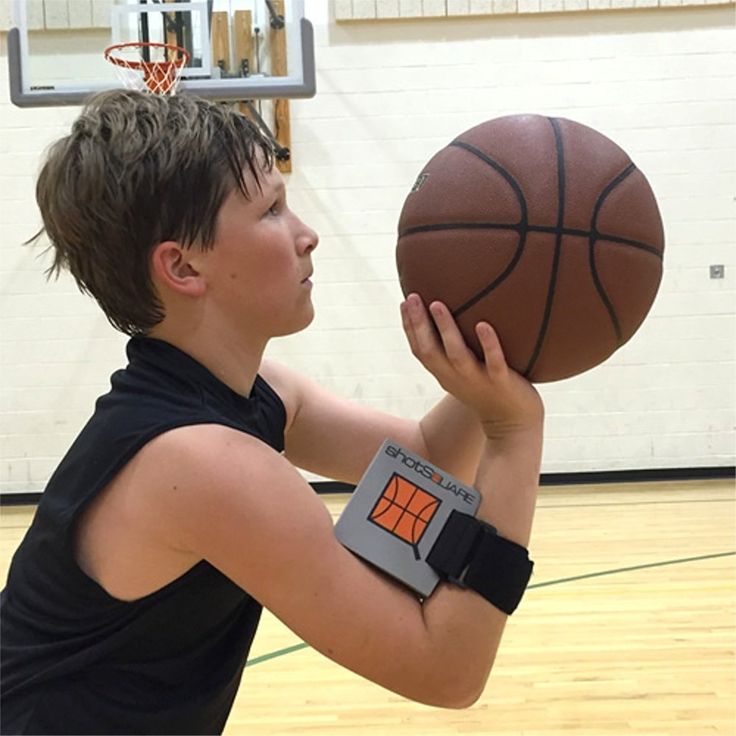 Well, we hope to help you out in this area. Below, we provide some advice on what to teach youth basketball players. We break it down between 3 levels. As you perfect each level, you can advance to the next level to teach more skills & concepts.
Well, we hope to help you out in this area. Below, we provide some advice on what to teach youth basketball players. We break it down between 3 levels. As you perfect each level, you can advance to the next level to teach more skills & concepts.
All beginner players should start with Level 1 no matter the age. We put ages next to the level as a general guideline. Depending on the
age and skill level, you'll progress through the levels at different rates. You may notice that you'll spend 4 years working on Level 1 with 7 to 10 year olds.
At the same time, you may be able to progress to Level 2 after two weeks working with a group of 13 year olds who are playing basketball for the first time.
I would advise to go back and start at Level 1 every year. A lot of high school and college coaches start at Level 1 every year. They just progress through the levels more quickly than a youth team. It's a great way to ingrain
the fundamentals into your players year in and year out.
We advise to take a couple of hours and write up a master practice schedule
for the season, so you can progressively teach them the skills mentioned below. It may take a few years to teach all of these skills at one level and THAT'S OKAY! For youth players, we want to focus on the long-term development, not how many games they win when they're 11 years old.
If you try to progress them too quickly, it will hurt them in the long-run. You want to have a solid foundation first. You shouldn't try to teach
them every dribble move in one year or every option in the motion offense. The same way in which you couldn't teach a person calculus if they did not
know how to do simple addition and subtraction.
Important Note: Throughout this article, you'll find many links to other articles on the website to explain concepts that we advise to teach. My
recommendation would be to read the entire article first, then go back and click on the links to read the other articles.
You may also want to add this article to
your "Favorites" or "Bookmark" it, because there may not be enough time to read all of the links in one sitting.
Level 1 (7 to 10 Year Olds)
Here's what to teach, ordered by priority:
- Lay ups - You should practice lots of lay ups with both hands. Your goal should be to get all players to make lay ups with their left and right hands equally well!! Teach them to jump off the proper foot. They should jump off the left leg when shooting a right hand lay up. They should shoot off their right leg when shooting a left hand lay up. It will be difficult but work on it. You'll probably need to start really close to the basket, with no dribble, and take just one step to practice the footwork. Once you add the dribble, they should dribble with their left hand when shooting left hand lay ups. And vice versa.
- Footwork - Teach them triple threat positioning, pivoting on their left and right foot without traveling, jump stops, and to square to the basket as soon as they catch the ball in a triple threat position.
 You should spend a lot of time on footwork!
You should spend a lot of time on footwork! - Shooting form - For this age group, we highly recommend using smaller balls and lower baskets. If that is not possible, allow the players to dip their elbows which will give them more strength. To learn more on shooting, we also have the Breakthrough Basketball Shooting Guide.
- Ball handling - You should teach your players to dribble with left and right hands equally. Basic dribble moves such as the speed dribble, crossover, protect-the-ball dribble, and back-up dribble.
Resource: Progressive Youth Ball Handling & Footwork Workouts App - Players can do the workouts from anywhere. The coaching dashboard also allows you to monitor multiple players or your whole team.
- Athletic & movement skills - Teach them how to run, jump and land, skip, stop, move laterally, squat, lunge and any other basic movements. If you don't know how to teach these movements, ask a professional or PE teacher to show you how.
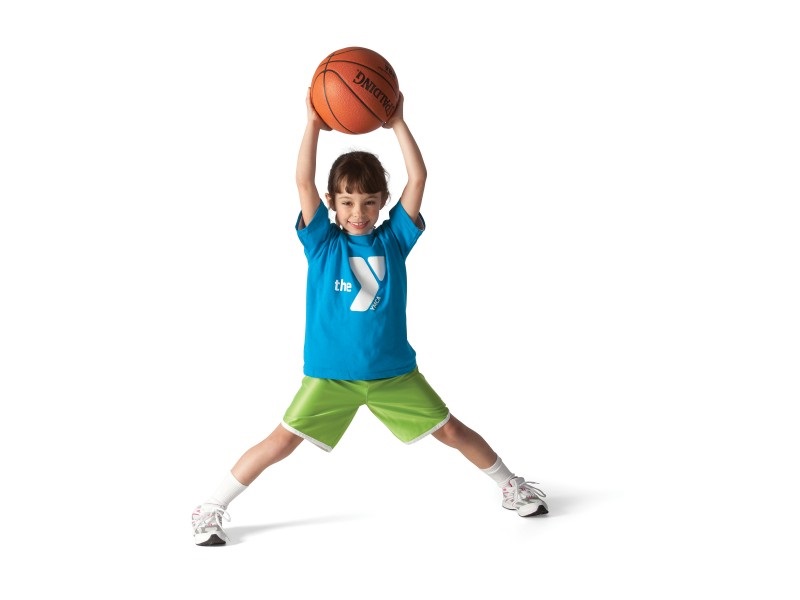 99% of the time they would be more than willing to help, and they may even come and show the kids themselves.
99% of the time they would be more than willing to help, and they may even come and show the kids themselves.Should We Teach Basketball Skills To Players Under the Age of 10? - Useful information for all levels of coaches, not just coaches who work with players under the age of 10.
- Basic passes - Teach and practice the basic chest, bounce, and overhead passes.
- Play plenty of 2 on 2 and 3 on 3 games to teach concepts (no dribble keep away). It gets the players more experience and allows them enough space to operate and use the new skills they have learned. Make sure to use plenty of age-appropriate drills & games.
For more on this, read Could 3 on 3 Basketball Be the Best for Youth Players?
- Offense - Do NOT use any structured or patterned offenses. First, get them comfortable on the court. They will start to figure things out on their own. Your main concern should be to have them move & not stand still.
If you use a few basic cuts and maybe screens in your shooting drills at the beginning of practice, then your players will already know how to move in a motion offense.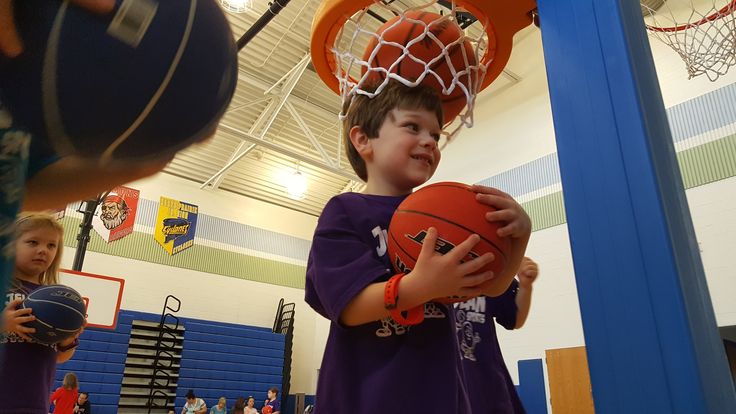 Then you don't have to waste time teaching offense. Just let them play.
Then you don't have to waste time teaching offense. Just let them play.
Once players feel comfortable on the court, show them proper spacing.
As they progress, you can start to introduce them to motion offense situations.
- Basic cuts & how to get open - If time permits, you can introduce the basket cut and straight cut. I would suggest that you just work these cuts into your shooting drills at the beginning of practice. This will save loads of time.
- Defense - Teach the basic stance, defensive slide, and basic off-ball principles. Don't worry about spending as much time on defense. As they get older, you'll gradually spend more time on defense. Focusing on it 5 to 10 minutes per practice would be more than sufficient.
Basic Off Ball Principles:
- Stay between man and the ball
- Always stop the ball if it is in front of you!
For this age group, we are against zone defenses for development purposes.
For anyone coaching this age group, we HIGHLY recommend the DVD The Youth Coaching System (By Jim Huber).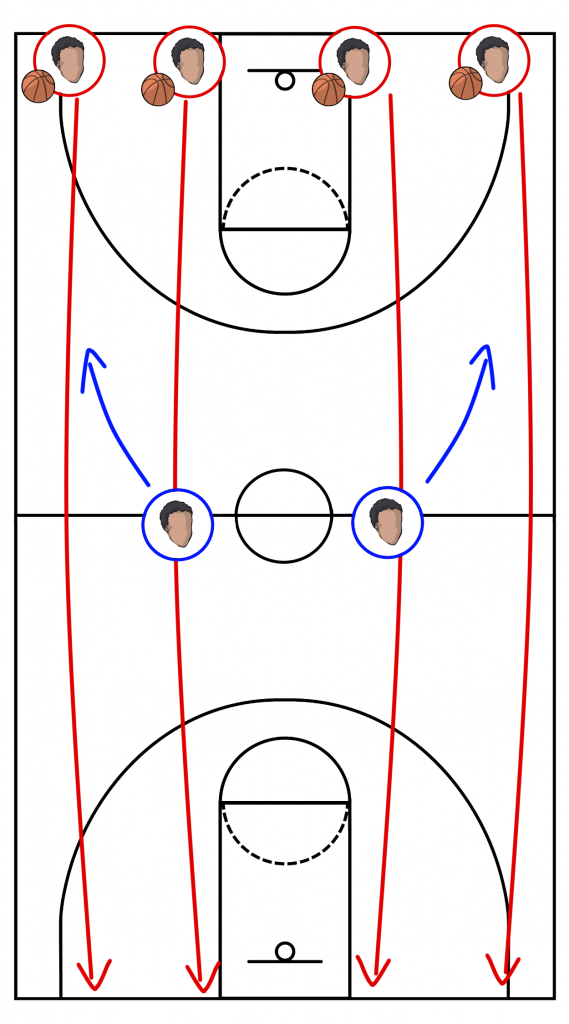 You'll gets lots of drills and learn exactly how to teach the most important fundamentals the to kids "right way". We truly believe this DVD should be required viewing for ALL youth coaches.
You'll gets lots of drills and learn exactly how to teach the most important fundamentals the to kids "right way". We truly believe this DVD should be required viewing for ALL youth coaches.
Level 2 (10 to 12 Year Olds)
You should expand onto more advanced skills for everything mentioned above. But remember, if your 10 to 12 year olds are inexperienced, you should start in Level 1. And at the beginning of each season, you should start at level 1 until those skills are perfected. Then you can progress into the more advanced stuff below.
- Lay ups - jumping off one foot and jump-stop lay ups.
- Teach more cuts: back cut, curl cut, etc.
- Continue to focus on shooting form and introduce some movement for shooting drills (shooting off the dribble and off the catch). To learn more on shooting, we also have the Breakthrough Basketball Shooting Guide.
- Ball handling & dribbling - teach more dribble moves such as the inside-out dribble (fake crossover), hesitation move, and between-the-legs.

Resource: Progressive Youth Ball Handling & Footwork Workouts App - Players can do the workouts from anywhere. The coaching dashboard also allows you to monitor multiple players or your whole team.
- Passing - continue to teach basic passes and introduce some advanced passes (baseball pass and wrap around pass). Use other drill such as machine gun passing and pass and switch.
- Passing under pressure - you can use pair passing with a defensive player in the middle running back and forth to pressure the passer. You can use this drill to practice breaking pressure: full court press breaker drill.
- Teach basic screens.
- Footwork - introduce jab steps and ball fakes (pass fakes and shot fakes).
- Rebounding - introduce rebounding technique.
- Basic post moves. drop step and jump hook.
- Spacing - introduce more basic spacing concepts.
- Offense - keep playing 2 on 2 and 3 on 3 to teach concepts.
 You can also start to introduce more motion offense situations and play some 5 on 5.
You can also start to introduce more motion offense situations and play some 5 on 5.
- Defense - keep emphasizing and spend a little more time on the defensive stance,
defensive slide, and off-ball principles mentioned in Level 1. If you feel that your players are ready, work on more
off-ball defense principles.
In our Man to Man Defense System, we provide step-by-step how to build and teach your defense.
For this age group, we are against zone defenses for development purposes.
For anyone coaching this age group, we HIGHLY recommend the DVD The Youth Coaching System (By Jim Huber). You'll gets lots of drills and learn exactly how to teach the most important fundamentals the to kids "right way". We truly believe this DVD should be required viewing for ALL youth coaches.
Level 3 (12 to 14 Year Olds)
You should expand onto more advanced skills for everything mentioned above.
- Lay ups - practice contested lay ups. Also, you could start to teach players, same-leg same-shooting hand lay ups. I know that is against conventional wisdom, but think about it for a second.Your player just blew by a defender or is on a fast break. Do you want them stutter-stepping to give the defense time to recover and contest the shot? So if that means jumping on your right-leg and shooting right-handed on the same side, so be it.
- Continue to teach basic cuts and add more cuts.
- Continue to emphasize shooting form (move to big baskets and bigger balls).
Practice shooting on the move off of the pass and the dribble. To learn more on shooting, we also have the Breakthrough Basketball Shooting Guide.
- Ball Handling & Dribbling - teach more dribble moves such as the spin move, behind-the-back. Incorporate some double-moves (crossover followed with a behind-the-back).
Resource: Progressive Youth Ball Handling & Footwork Workouts App - Players can do the workouts from anywhere. The coaching dashboard also allows you to monitor multiple players or your whole team.
The coaching dashboard also allows you to monitor multiple players or your whole team.
- Passing - introduce some other advanced passes (dribble pass, behind-the-back pass, pick and roll pass).
- Passing Under Pressure - You use Pair Passing with a defensive player in the middle running back and forth to pressure the passer. You can use this drill to practice breaking pressure: Full Court Press Breaker Drill.
- Teach Basic Screens.
- Footwork - continue to work on jab steps, pivots, and ball fakes (pass fakes and shot fakes).
- Rebounding - put more emphasis on rebounding technique and spend more time on rebounding drills.
- Post moves - keep practicing post moves mentioned above while introducing a few more when the players are ready drop step
counter and up-and-under move.
- Spacing - advance to higher levels of spacing drills.
- Offense - introduce more motion offense situations.
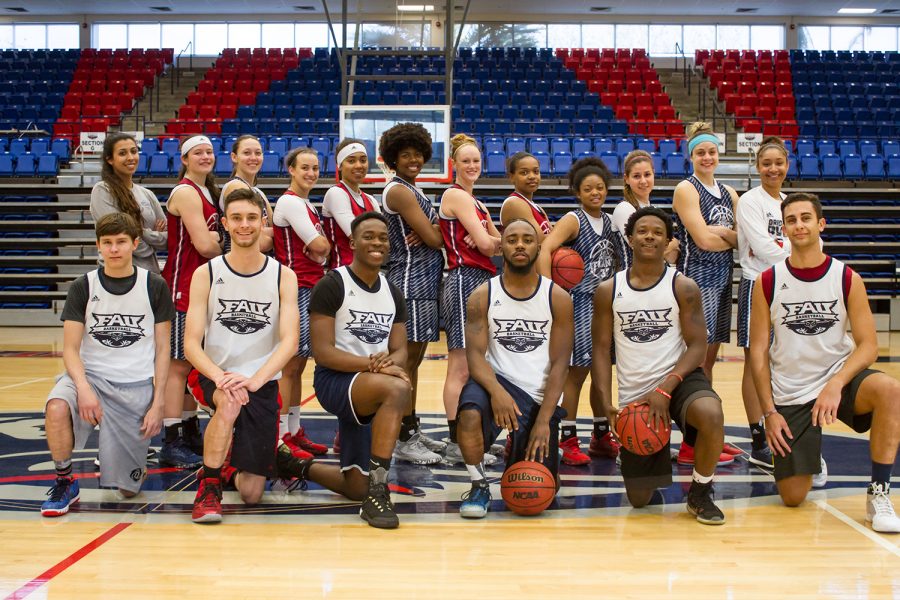 You should start to notice that your players are becoming much better at reading the defense.
You should start to notice that your players are becoming much better at reading the defense.
- Defense - Emphasize basics from previous levels and move on to rotations and situations.
In our Man to
Man Defense System, we go into great detail about rotations and situations.
For this age group, we are against zone defenses for development purposes.
Sample Practice Plan for 7 to 10 year olds.
Sample Practice Plan for 11 to 14 year olds.
Do you have any questions or suggestions? Let us know by leaving your comments...
How to create a children's training plan
Many times, visiting the training of children's teams in Ukraine and Portugal, I have seen and still see that most coaches do not have a pre-prepared training plan in their pocket. For some trainers, exercises last 20-25 minutes each. The coach thinks that this is how he achieves the successful completion of this exercise, not realizing that the players get bored doing the same action for a long time, and they lose interest and concentration.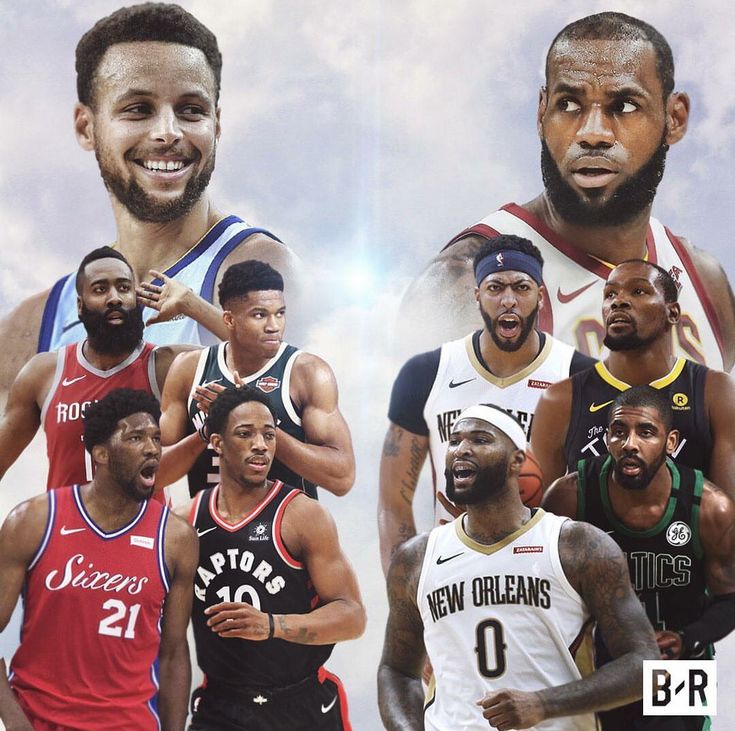 It was very rare that I saw a coach reach into his pocket and, having taken out a training plan, look at what was next in his training and what time was allocated for the next exercise. And it is very important whether this exercise is suitable for the age and technical preparedness of your players.
It was very rare that I saw a coach reach into his pocket and, having taken out a training plan, look at what was next in his training and what time was allocated for the next exercise. And it is very important whether this exercise is suitable for the age and technical preparedness of your players.
On this occasion, I would like to offer you an article by American basketball blogger Coach Mac - How to Create a Youth Basketball Practice Plan and a statement by leading coaches.
"Players win games. Coaches win practice." Practice is the time when coaches have the greatest opportunity to influence a player's basketball skills... However, I've attended practices so irrationally run that half of the coaching session is just trying to figure out which drill to do next.
All coaches should spend most of their time encouraging and providing feedback to your players. How can a coach fix this and make training more effective? We create a basketball practice plan.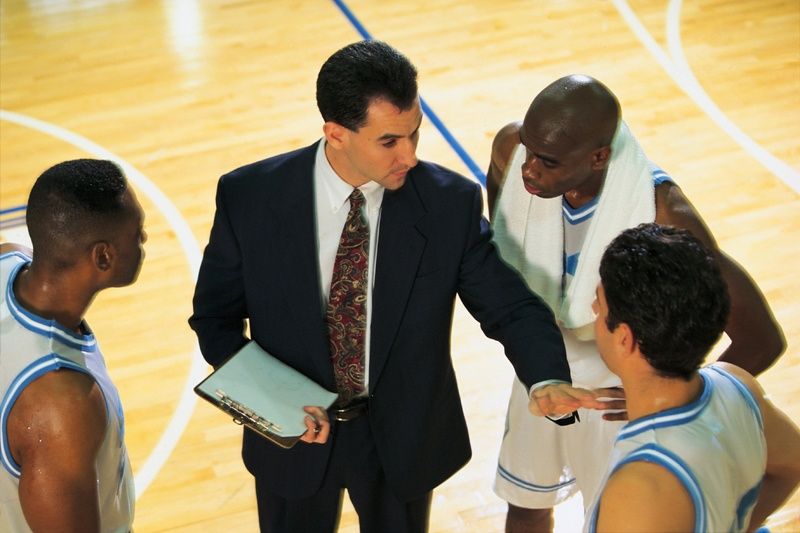
Here are just a few quotes from great coaches that highlight the importance of having a plan to follow in a workout
"I always prepare my plan the night before a workout and then make adjustments a few hours before the workout starts" - Bobby Knight . "I spend almost as much time planning a workout as I do the workout itself. Everything is planned for every day" - John Wooden. Knowing how important it is to have a plan for every workout, let me show you the structure you should use to plan every workout.
Workout structure
We break down a typical workout into 5 sections ...
1. Dynamic warm-up / body movements
2. Mastery work
3. Team strategies
4. Small group games / games
5. Cool down
First, let's look at each section of the structure in more detail, and then later on, consider how much time you should spend on each of the sections.
Dynamic warm-up / body movements
Unfortunately, many of the children's basketball coaches are quickly released from this section. They have their team drills done in 2 minutes of dynamic warm up and immediately move on to other sections of the workout. When I watch children's games, it becomes obvious that the best players have fantastic balance, coordination and speed and change directions quickly accordingly. And there are those players who are struggling, trying, but who have not yet learned to control their body properly. It's extremely important that we help players build a sports base early on. With this foundation, it becomes much easier to learn new basketball skills as they progress. This workout section will help your players much more than their basketball skills. This will help them avoid injury and help in their movements in life. Here are some examples of body movements and coordination moves to include in your dynamic warm up.
They have their team drills done in 2 minutes of dynamic warm up and immediately move on to other sections of the workout. When I watch children's games, it becomes obvious that the best players have fantastic balance, coordination and speed and change directions quickly accordingly. And there are those players who are struggling, trying, but who have not yet learned to control their body properly. It's extremely important that we help players build a sports base early on. With this foundation, it becomes much easier to learn new basketball skills as they progress. This workout section will help your players much more than their basketball skills. This will help them avoid injury and help in their movements in life. Here are some examples of body movements and coordination moves to include in your dynamic warm up.
- Jogging
- Sprinting
- Back Pedaling
- Side Stepping
- Changing Direction
- Changing Pace
- Jumping
- Landing
- Lunging
- High Knee Running
For more information on the best body movement exercises you must use Alan Stein's YouTube channel.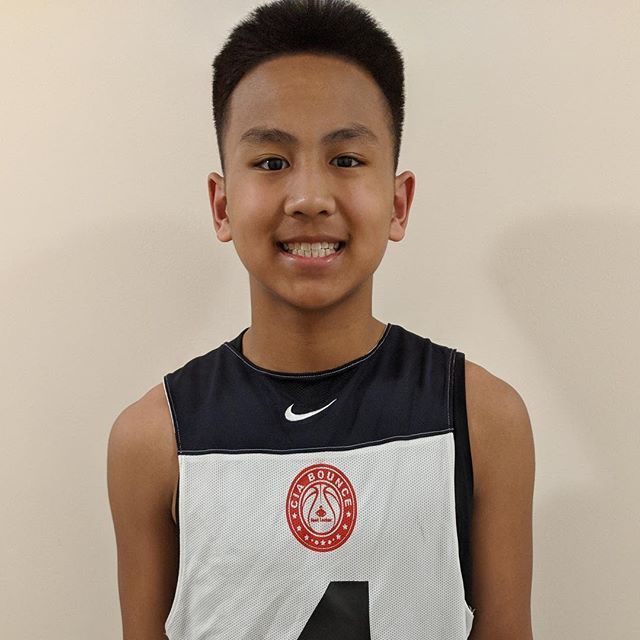
Skill work
Individual technique work should take up most of the training time at the level of the children's basketball team. Training should be fun and interesting, and at the same time improve the skills of your players. This includes drills that teach players how to properly perform skill skill moves, along with drills that help them learn when and how to use that skill. Drills that allow the player to learn when and how to use this skill are generally skipped.
As for throws, there's a little quote from Jeff Van Gundy ... Shooting hit percentage depends as much on the player's decision making as it does on his throwing technique - Jeff Van Gundy
This rule applies to all skills, not just throws. We need to put players in positions that require them to make decisions and learn from experience.
Here's a simple example to explain my point of view on the drill... Many trainers will practice the V-snatch to open up on the perimeter. They will show the players how to sprint, footwork to cover their defender and then rush in to get the ball. They will even show their players how to grab the ball and use 1- or 2-hit dribbles to complete a jump shot or double step shot. But when a player gets into a real game, and although he knows his rushing technique and footwork pretty well, he can't open up and get the ball. Why? Because they haven't learned when and how to use movement in competition. They didn't have enough experience with a defender to know when and how to rush behind the back and get the ball, etc. The bottom line is that we should include drills that teach the players' individual technique, and definitely drills that will allow them to gain experience on when and how to use it competitively. I recommend trying and splitting these two types of drills 50/50. Dribbling is an example: 5 minutes of steady ball handling and then a 1 on 1 game of hard tackling. Throws - example: 5 minutes of throwing technique and then 1 on 1 with a partner entering a defensive position where the thrower should decide whether to shoot or pass.
They will show the players how to sprint, footwork to cover their defender and then rush in to get the ball. They will even show their players how to grab the ball and use 1- or 2-hit dribbles to complete a jump shot or double step shot. But when a player gets into a real game, and although he knows his rushing technique and footwork pretty well, he can't open up and get the ball. Why? Because they haven't learned when and how to use movement in competition. They didn't have enough experience with a defender to know when and how to rush behind the back and get the ball, etc. The bottom line is that we should include drills that teach the players' individual technique, and definitely drills that will allow them to gain experience on when and how to use it competitively. I recommend trying and splitting these two types of drills 50/50. Dribbling is an example: 5 minutes of steady ball handling and then a 1 on 1 game of hard tackling. Throws - example: 5 minutes of throwing technique and then 1 on 1 with a partner entering a defensive position where the thrower should decide whether to shoot or pass.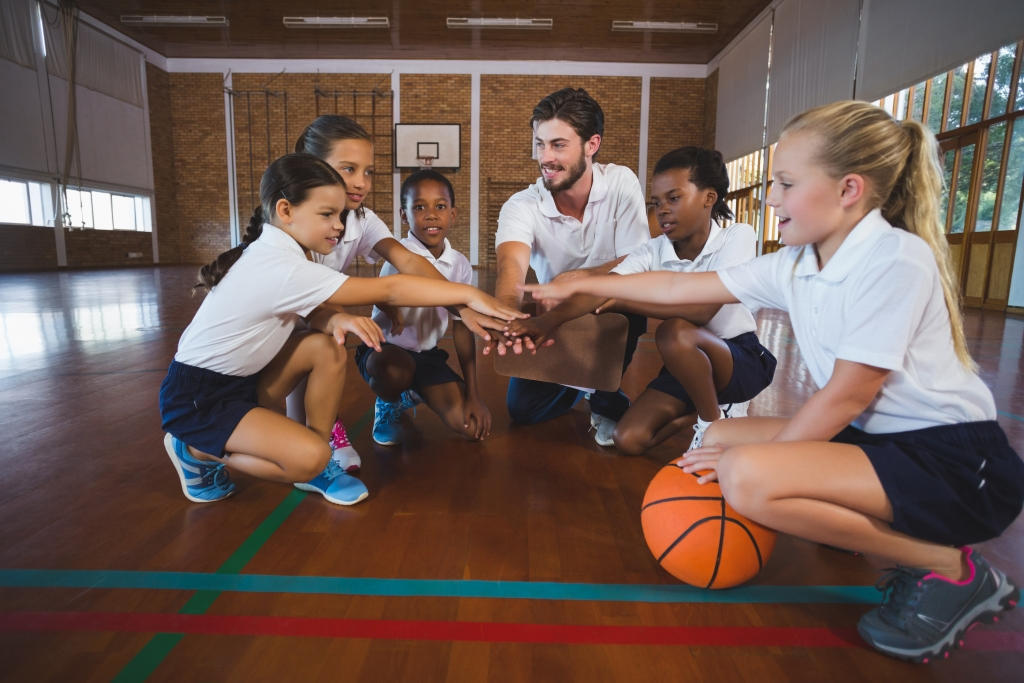 Passing - example: 5 minutes of passing technique and then 10 minutes of 5 vs 4 play, so the attacking team has the advantage and will always have one player open. When I flip through games in small squads at the end of a workout, I still use them in this section to improve individual decision making skills. "Perform exercises that make your players think" - Bobby Knight.
Passing - example: 5 minutes of passing technique and then 10 minutes of 5 vs 4 play, so the attacking team has the advantage and will always have one player open. When I flip through games in small squads at the end of a workout, I still use them in this section to improve individual decision making skills. "Perform exercises that make your players think" - Bobby Knight.
TIP: At the youth basketball level, exercises should be no longer than 10 minutes. Players become uninterested in completing after this time. Keep the exercises short and fun!
Team strategy. Let me start by saying that "team strategy" is by far the least important part of kids' basketball training, and in my opinion not essential for players under the age of 10.
Training section *Team strategy* includes:
- Attack.
- Protection.
- Game schemes for attacking.
- Special situations.
If you decide to use this section of the training session with your team, please allow only a small amount of time for it.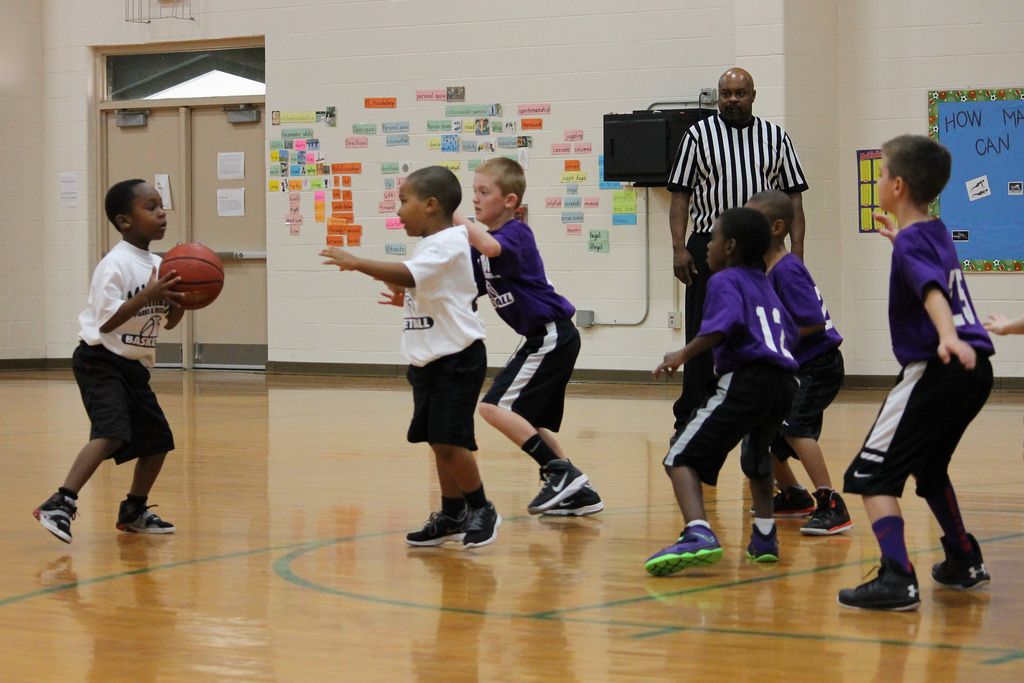 I see way too many coaches stealing practice time from skill development and spending half the practice helping players remember where they need to be for multiple play formations. Remember, we want to teach our players how to play basketball, not give them a couple of spots on the floor where they have to work every time they have the ball. Don't get me wrong, I don't mind teaching team strategy to players. - I include it in my basketball training. - I'm opposed to wasting half of your precious training time on this.
I see way too many coaches stealing practice time from skill development and spending half the practice helping players remember where they need to be for multiple play formations. Remember, we want to teach our players how to play basketball, not give them a couple of spots on the floor where they have to work every time they have the ball. Don't get me wrong, I don't mind teaching team strategy to players. - I include it in my basketball training. - I'm opposed to wasting half of your precious training time on this.
Team Wrestling and Small Team Games
These two sections are very important for every workout. What's the point of your players learning how to crossover with great technique if they don't understand when and how to use it in the game? The technical side of the performance is important, but it is also very important that allows children to use this technique in the game. This doesn't mean letting them loose in a 5-on-5 game in every practice though (even if this is indeed the case).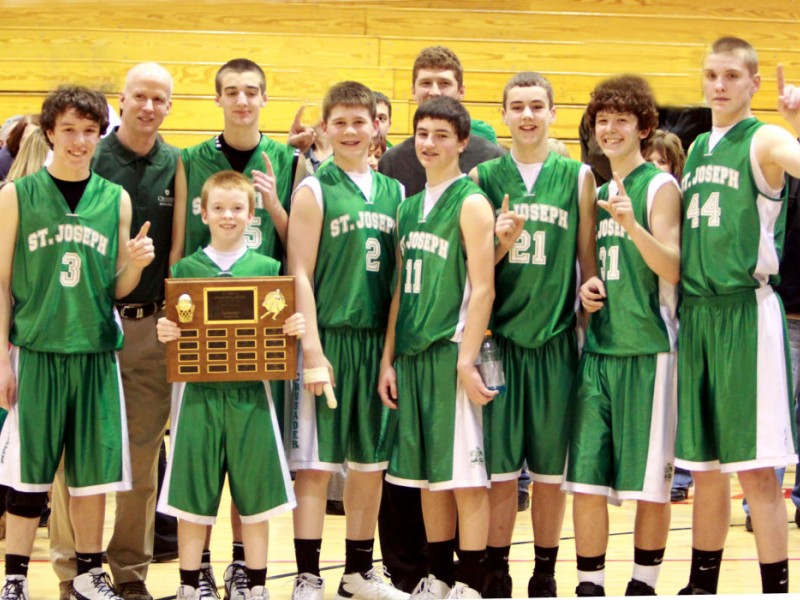 One-sided games with a small composition include games 1v1, 2v2, 3v3, etc.
One-sided games with a small composition include games 1v1, 2v2, 3v3, etc.
There are many benefits to using mini-games for your players including:
- Touching the ball more times.
- More space for movement training.
- More opportunities to hit the ball in the basket.
- And much more.
All of these benefits help players develop faster and have more fun! So if you have more than one hoop and enough balls, use them and play in small formations using all the baskets in your court. Another thing I like to do in 5v5 and small team games is to apply different rules to work on different skills. For example, one of my favorite rules is "no dribbling". It forces the kids to read the game and make tugs to open up. Without this rule, you will find a common youth habit of a player dribbling with 5 or 6 head down dribbles before throwing a wild hook into the basket while 3 of his teammates are standing wide open.
Cool Down
Cool Down - This part of your training should consist of a few minutes of slow jogging and walking up and down the gym, followed by a few minutes of static stretching.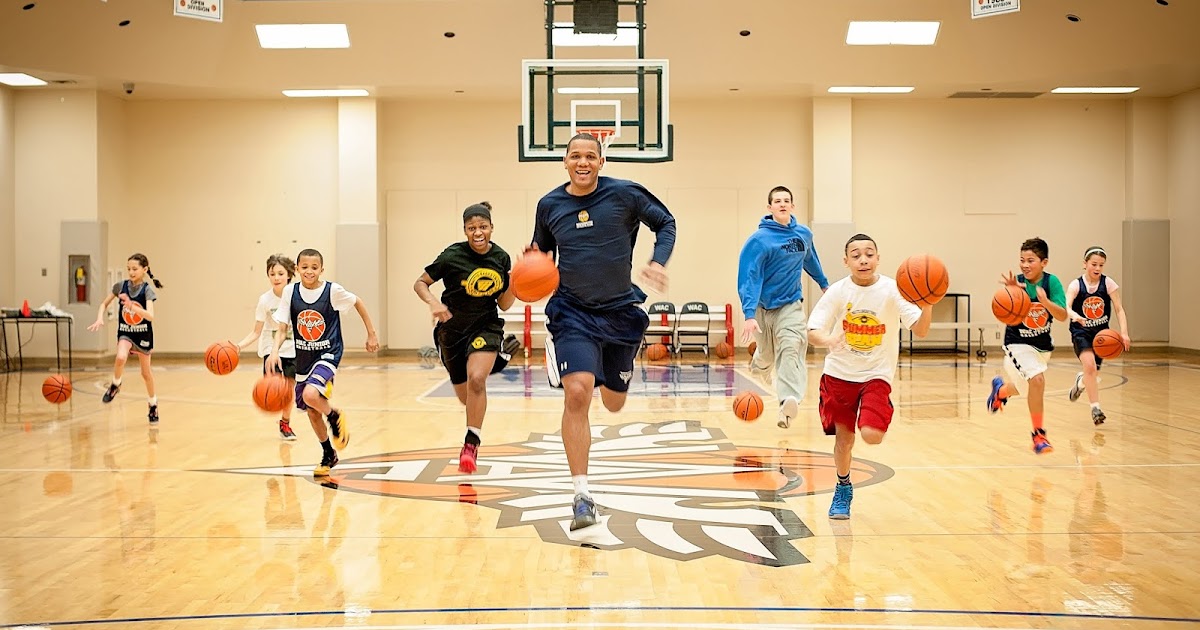 This allows the body to lower its temperature, and static stretching aids in flushing out waste products (lactic acid), among other things. I find stretching part of the cooldown important for communicating with the players. We could talk about the upcoming game/tournament or how we feel about our practice.
This allows the body to lower its temperature, and static stretching aids in flushing out waste products (lactic acid), among other things. I find stretching part of the cooldown important for communicating with the players. We could talk about the upcoming game/tournament or how we feel about our practice.
Structure of the Workout Plan
Now that you understand each section of the workout, let's talk about how much time during the workout should be dedicated to each section. Below is how I distribute minutes depending on the duration of the workout.
60 minutes
Dynamic Warm-up / Body Movement - 10 minutes
Skill Work - 25 minutes
Team Strategy - 10 minutes
Team Wrestling / SSG Small Squads - 10 minutes
Cool Down - 5 minutes
90 minutes
Dynamic Warm Up / Body Movement - 15 minutes
Skill Work - 45 minutes
Team Strategy - 10 minutes
SSG Team Wrestling and Small Squads - 15 minutes, Cool Down - 5 minutes
120 minutes
Dynamic Warm-up / Body Movement - 20 minutes
Skill Work - 60 minutes
Team Strategy - 15 minutes
SSG Team Wrestling and Small Squads - 20 minutes
Cooldown - 5 minutes
Using this structure, I believe that it combines the teaching of individual technical skills with the practical application of these skills.
A Final Word on the Workout Plan
The biggest thing I want you to take away from this article is that you need a workout plan always and for every workout.
By using your training more effectively, your players will learn to play technically and effectively faster and you will look much better as a coach.
I want to hear from you. What do you think is the biggest benefit of planning and writing a kids basketball practice plan?
V. Melnychuk translated 12/07/2016.
Most Common Mistakes in Kids Team Practice
By Coach MAC
Have you ever wondered what mistakes you make when you run basketball practice? In creating this blog I have been blessed to interact with some of the smartest basketball minds in the US . What better way to help you and collect answers to our simple question from all these experts? I asked leading basketball experts to answer: "What are the most common mistakes coaches make when conducting training in children's basketball?" There are two ways you can digest their responses. ..
..
1. I created this list so you can skip some by going down to your favorite expert.
2. Grab a coffee, make sure you have 20-30 minutes to spare, and read the entire list (recommended).
Darrell Johnson – Cross Over Hoops
The most common mistake that coaches make when conducting youth basketball practice is neglecting the basics of fundamental technique. Some children's coaches are too concerned with the results of their team's games, how many wins they can get. Don't get me wrong, winning is important, but developing fundamental individual technique skills is much more important at a child level. No one will remember your elementary school team record, but what they will remember is winning their state varsity tournaments or maybe the U.S. championships... Most kids' training should be spent on developing skills, not teaching offensive and defensive strategies. What good is a game worth when your players can't dribble, pass, or shoot the basket? The basics of individual fundamental offensive and defensive playing techniques must be taught correctly and then trained using repetition. If a player does something wrong, then the mistake must be corrected before a bad habit is formed. Too many players enter middle and high school with terrible habits that are extremely hard to break because they weren't corrected in elementary school during the training period. Establishing a good foundation of fundamental playing technique is the primary responsibility of children's coaches for the future careers of their pupils.
If a player does something wrong, then the mistake must be corrected before a bad habit is formed. Too many players enter middle and high school with terrible habits that are extremely hard to break because they weren't corrected in elementary school during the training period. Establishing a good foundation of fundamental playing technique is the primary responsibility of children's coaches for the future careers of their pupils.
Alan Stein – Stronger Team
The most common mistakes youth coaches make are:
Training is not age appropriate (physically, mentally or emotionally). Training is not targeted. Workouts are boring.
Brian McCormick - 180 Shooter
Exercise must have a goal, and the coach must also know the goal for each part of the workout, even if the goal is to take a break to recover before intense exercise. However, the biggest mistake is talking too much and giving answers to all the players to their questions. There is a misconception that players learn a lot from the coach's conversations or briefings; but players learn more from doing. When the coach speaks, the players do nothing. Instructions should be short and concise. Players should be able to decide for themselves what to do or what they should have done. When coaches constantly give advice, players stop thinking and rely only on the coach.
There is a misconception that players learn a lot from the coach's conversations or briefings; but players learn more from doing. When the coach speaks, the players do nothing. Instructions should be short and concise. Players should be able to decide for themselves what to do or what they should have done. When coaches constantly give advice, players stop thinking and rely only on the coach.
Randy Brown – Coach RB
1. Conducting a workout without a well thought out plan prior to practice. Note: The plan must be developed jointly with the assistant trainer so that what is taught is the result of a collaborative effort. Every workout needs a goal.
2. Not making maximum use of time, court space and high involvement for all players. those. - Gathering in line for throws is one of the most mediocre wastes of time.
3. There is no method for evaluating every workout. Without a methodology to accurately assess the progress of players and teams, how to measure the improvement of this training session, the necessary adjustments for the next training session, and use the analysis of how time was used and whether your goal in training was achieved - there can be no good results.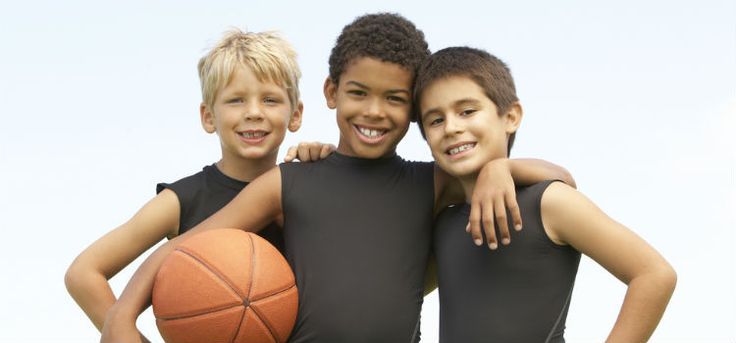
4. #1 frustrating - Trying to do too many things and waste time attacking and defending instead of dividing them into parts of each and teaching / coaching / making players responsible for each skill. What for? - If you do not make the players responsible for their actions in training, then this is the fault of the coach and not the players. How can a coach be frustrated, angry to make substitutions when he didn't teach / coach / and not every player / and the team as a whole listened to him, practiced skills in exercises, and then put them into practice. Until this is done, the game is a joke, and the coach is to blame for this.
Bryan Burrell - New Age Elit Sports
In my opinion, the most common mistake in training children's teams is the amount of time coaches spend on special game situations.
I believe that time in kids basketball practice today is only spent making their current team better, not working on things that will benefit the players throughout their future careers.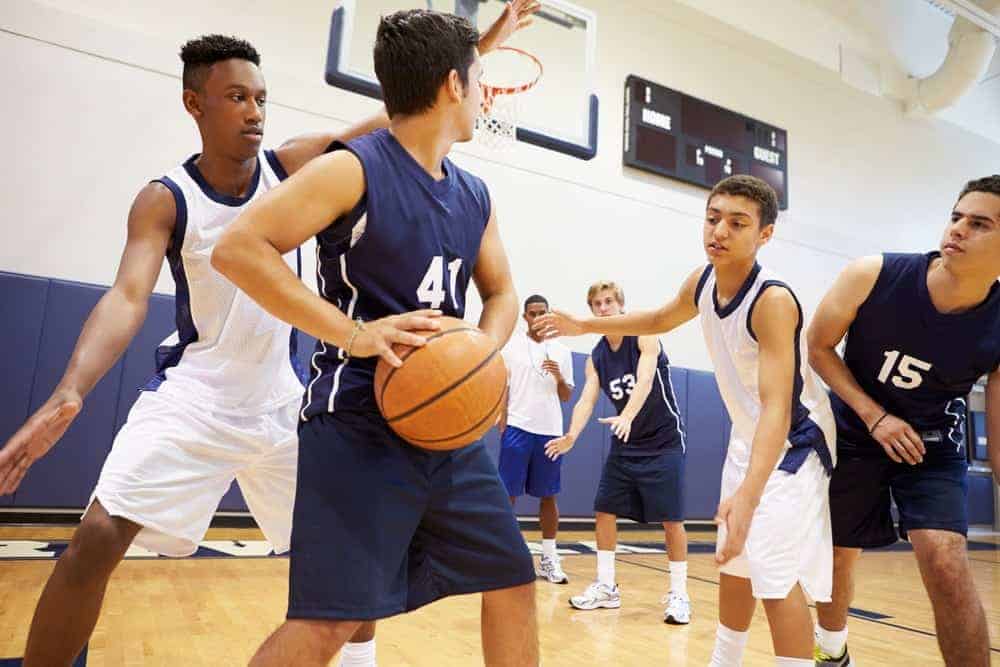
Chris Hyppa – Chris Hyppa BasketBall
Coaches are only focused on winning!
• Everyone wants to win, but the "development of individual fundamental skills" at the youth level takes a back seat to win. I believe development should be focus #1. Victories will follow. Developing through learning and improving skills, raises basketball IQ and strengthens relationships with players!
• Have a plan!
• I see a lot of kids training without a "goal". Kids coaches will have more productive workouts and see players progress if they document progress/failures and have a plan for every workout! "Confidence comes with preparation" - you have the power to inspire confidence, be prepared!
Courtney Campbell – Train to Ball
• I think it's a common mistake coaches make to spend 20% focused time instead of 80%. This comes from the Pareto principle (or the 80-20 rule) which states that 80% of the results come from 20% of your actions. I think a lot of young coaches' drills are designed to teach certain skills that are rarely used in games. Drills can be chosen randomly without thinking about what are the dominant skills needed to create an effective and productive player. I try to tailor my agility drills, footwork, individual ball technique, etc. to learn and improve the basics of what will be 80% applied in the game.
I think a lot of young coaches' drills are designed to teach certain skills that are rarely used in games. Drills can be chosen randomly without thinking about what are the dominant skills needed to create an effective and productive player. I try to tailor my agility drills, footwork, individual ball technique, etc. to learn and improve the basics of what will be 80% applied in the game.
• In addition, there is an increase in the use of rubber bands and other training tools and equipment that will help increase the first stride, speed and agility of the players. However, most coaches are not aware of the mechanisms of injury in our game. If the trainer does not have knowledge of the general mechanism of injury, you are likely to increase the number of injuries with this equipment (knee, back and other injuries). Use this equipment with the limitation to your proper self-study.
Dave Hopla - DaveHopla.com
I find that most coaches are more interested in managing the game or letting them play rather than teaching them how to play.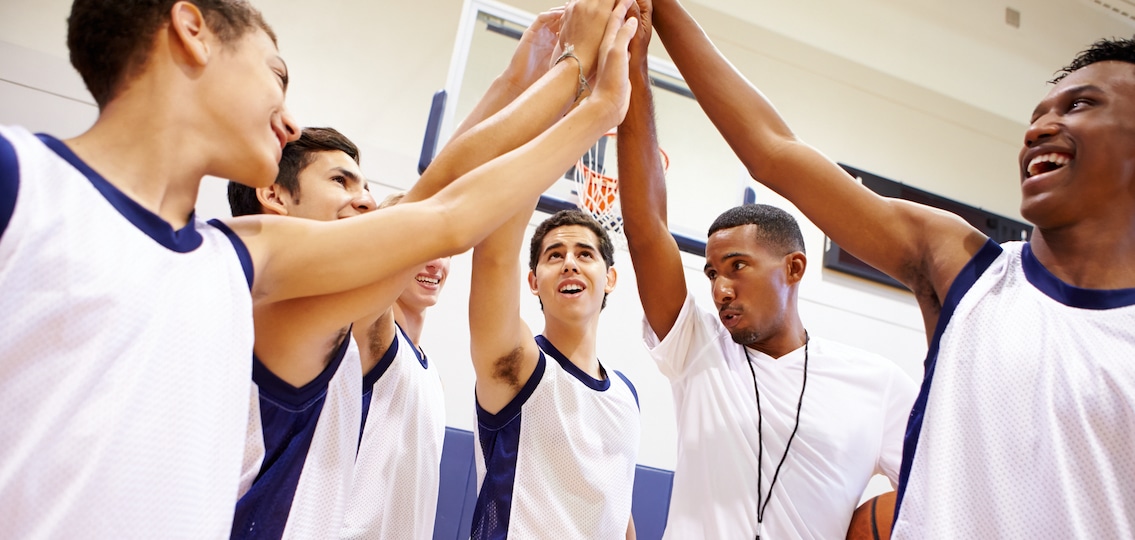 It never seems to be enough training to pass, catch, or throw. Too much dribbling.
It never seems to be enough training to pass, catch, or throw. Too much dribbling.
David Nurse –Perfect Shots Shooting
I firmly believe that one of the biggest mistakes children make is that they want to start learning offensive play formations by making players become "robots". The more coaches emphasize drills that put young players in situations where they have to make quick decisions and think for themselves, the more and sooner they will develop their IQ of their game. It's like when you want to learn a new language, it's easiest to do it while you're young, before your brain gets developed in that area. The same with IQ "feel basketball". It is very important to develop this feeling as early as possible and youth coaches should do their job much better. I have seen all this all over the world, and this same topic is driving me crazy! I compare these bad habits of being a "robot" to sleeping in comfortable beds - it's easy to get into bed, but very hard to get out. Players must learn to think for themselves at a young age and this habit will pay dividends in their development.
Players must learn to think for themselves at a young age and this habit will pay dividends in their development.
Drew Hanlen - Pure Sweat Basketball
• Too much flame and not enough fuel
• Too many old routines (eight 3's, throws with no resistance on passes) and not enough individual skill development
• Too much play and not enough development exercises
• Lack of correction (too many mistakes allowed).
• Winning at lower levels is celebrated instead of focusing on learning skills for long-term success
Duane Jourdeans - Rule of 5
1: No training plan
2: No focus on building relationships with players
3: No development and improvement of playing skills 4: Emphasis on game management
not how to play
5: Shouting while learning
6: Lack of preparation of leader players
7: Tall children learn to play only in the center position
8: Lack of mental preparation.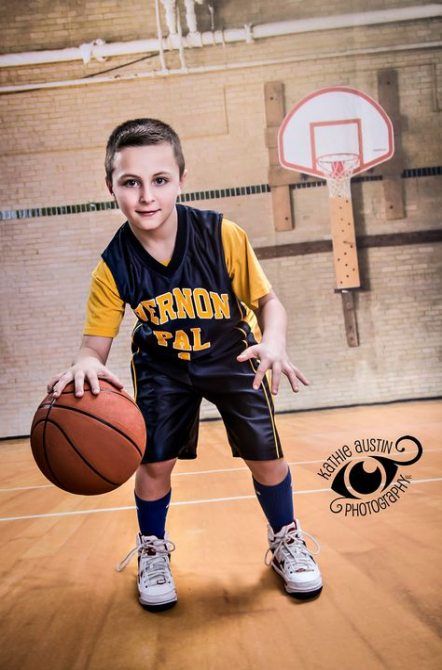
9: Fitness exercises without a basketball goal
Galen Harkness – GalenHarkness.com
Major mistake: Too much emphasis on strategies for how to win the game, which often sacrifices a long-term program of fundamental player and team development.
Other thoughts.
1st: Too much emphasis on game control and game combinations. Coaches have a good set of playing combinations that are trained to complete the throw. But what can players do when schemes don't work? This strategy is designed in such a way that it does not allow or encourage players to make the right game decisions.
2nd: Lost time. A large amount of time is spent when moving from one exercise to another. Drills are rarely designed or implemented in such a way that all players are constantly involved in them. Too many stand still.
3rd: Lack of professional development. Some coaches teach and practice the way they learned to play. The basketball game is constantly evolving, but not all children's coaches evolve with the game.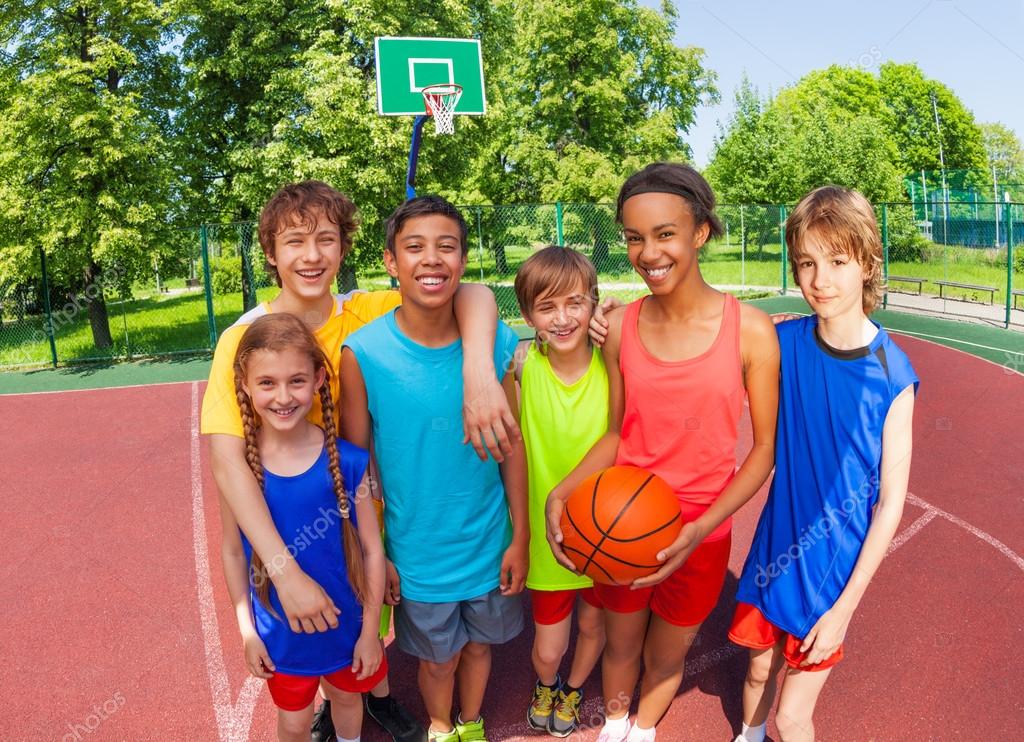
Ganon Baker – Elev8Basketball
Problem - Coaches talk too much during practice where the kids lose their attention and sweat. They are too wordy in their instructions. Decision - do instruction/correction 20-50 seconds. Make your remarks, and then exit them without disrupting the flow of intense training.
Problem - trainers do not use humor or have no sense of humor. They seem to be tough and awkward in their communication. Decision - A coach with a child's heart but an adult mind. Enjoy the conversation, but don't overstep the bounds. Basketball game for kids, help them have fun!
Problem - they use useless exercises in their training. The drills are boring and not like a game, and do not belong to their offensive and defensive systems! Decision - examine your ship. Try to find ways to have a professional workout.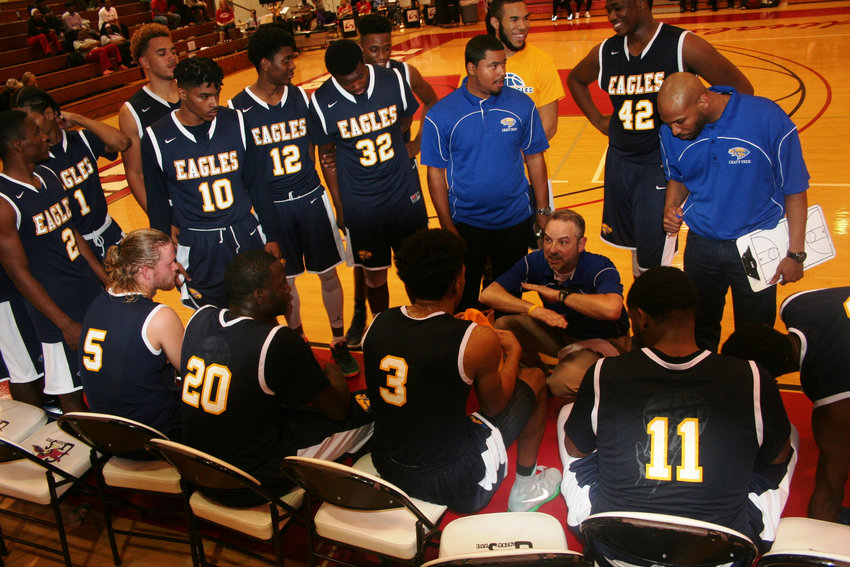 Teach the skill, choose exercises similar to the game, such as 1 on 1, 2 on 2 or 3 on 3.
Teach the skill, choose exercises similar to the game, such as 1 on 1, 2 on 2 or 3 on 3.
Gary Maitland – Coach Maitland
1. Punishment. Children's basketball practice is an early experience of a long-term passion and commitment to the sport we love. The biggest mistake a coach can make is to create an environment where kids are afraid to "do it wrong". It is unfortunately all too common for children's basketball coaches to punish their players for mistakes. The player should not be afraid to make mistakes. Mistakes are an integral part of the learning process and hence it is important for children to know that they will not be constantly penalized. Basketball involves a number of complex ball handling and decision making skills. Skills must be taught, developed and mastered. When the coach punishes a player for a mistake, he/she prevents the player from taking risks; Risks help them learn the game and develop a sense of making quick decisions and actions. Those early training years should be interesting. Children should have fun when they learn new things. If a coach punishes kids with endless push-ups or sprints, it is unlikely that they will want to continue training with him and have fun. It will only be a matter of time before they stop attending these workouts. It is very important for young players to understand the consequences of their mistakes (i.e. that poor performance has a negative impact on the course of a drill or game). Punishments do not teach children how to do a technique or how to make a better decision next time. This type of coaching behavior is so common that young players judge the quality of coaching/training by how intense the punishments were. "What was the workout like?" "It was hard. We ran a lot and did a lot of push-ups." This answer shows that not much (or anything) was learned during this training session.
Those early training years should be interesting. Children should have fun when they learn new things. If a coach punishes kids with endless push-ups or sprints, it is unlikely that they will want to continue training with him and have fun. It will only be a matter of time before they stop attending these workouts. It is very important for young players to understand the consequences of their mistakes (i.e. that poor performance has a negative impact on the course of a drill or game). Punishments do not teach children how to do a technique or how to make a better decision next time. This type of coaching behavior is so common that young players judge the quality of coaching/training by how intense the punishments were. "What was the workout like?" "It was hard. We ran a lot and did a lot of push-ups." This answer shows that not much (or anything) was learned during this training session.
2. Long lines Children's practice should be structured so that each player has a lot of touches on the ball. Children's training is developmental training and therefore a sufficient number of repetitions of learning and improving elements of individual technique should be planned. When the coach puts the players in long lines, it reduces the number of times the player has the ball. Their chance to interact with the learning decreases, they become bored and distracted. It is very important for young coaches to organize their training so that all children are active, busy and practicing skills.
Children's training is developmental training and therefore a sufficient number of repetitions of learning and improving elements of individual technique should be planned. When the coach puts the players in long lines, it reduces the number of times the player has the ball. Their chance to interact with the learning decreases, they become bored and distracted. It is very important for young coaches to organize their training so that all children are active, busy and practicing skills.
Greg White - Twitter Profile
The epidemic of bad coaching in youth sports is high at all times. I applaud USA Basketball for creating a coach certification program, but there is a question we need to answer: "Who trains our coaches?" Here are a few things I see wrong with youth coaching. 1. Exercise is more important than Skill. Coaches use exercises for the sake of exercise in elementary school. Ever watched an 8 year old team run a 3 player eight? This has no meaning or purpose. Find a way to practice skills without overly difficult exercises. We learn the alphabet letter by letter. 2. Fundamentals. Young players should not associate practice with yelling. Children's basketball should be fun and upbeat while learning the basics of the game. 3. Play simply without complicated game patterns. Teach players how to play, not how to make combinations. What do you gain by using exercises at the 5th grade level that are not well suited to the 7th grade. 4. Competitions. Too many games. It doesn't take a genius to know that in a team game of 8 year olds, the 2-3 zone wins games. At this age, competition is more for the ego of the parent than for the benefit of the children. Let children be children. I think we shouldn't play 5v5 under 10.
Find a way to practice skills without overly difficult exercises. We learn the alphabet letter by letter. 2. Fundamentals. Young players should not associate practice with yelling. Children's basketball should be fun and upbeat while learning the basics of the game. 3. Play simply without complicated game patterns. Teach players how to play, not how to make combinations. What do you gain by using exercises at the 5th grade level that are not well suited to the 7th grade. 4. Competitions. Too many games. It doesn't take a genius to know that in a team game of 8 year olds, the 2-3 zone wins games. At this age, competition is more for the ego of the parent than for the benefit of the children. Let children be children. I think we shouldn't play 5v5 under 10.
Hal Wilson - Coaching Basketball Wisely
Maybe these exercises were used when you were playing because they suited your skill and development level, but they are not suitable for the level of the team you are coaching now.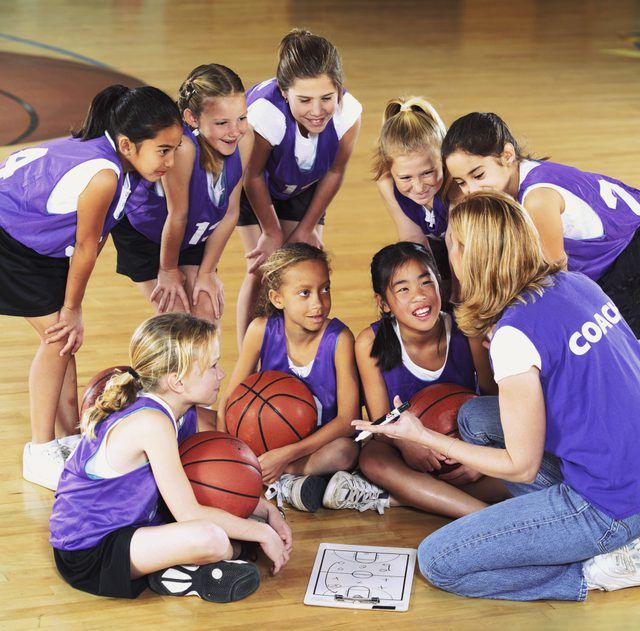
2) The second big mistake is to just do something because it's done by the successful coach X on TV. Great coaches have great players with great needs, again, your players may have other needs. Trying to get your players to use and perform elements of high and complex skills and concepts before they have mastered the basics of fundamental individual technique, a recipe for disaster, for herbs or frustration. Coaches must look beyond their own experience and find cutting edge ideas, but must adapt them to their team's current situation. A drill should be designed with clear goals: a) How this drill can help your team in games, b) Gradual progression (break complex skills and concepts into more accessible levels for your players), c) Applying clear goals and objectives of the game (players need to understand why skills and concepts are important and how they will help them be more successful individually and how they will help their team in games).
3) The third big mistake is to train to make the coach look good and not to teach the team to play better.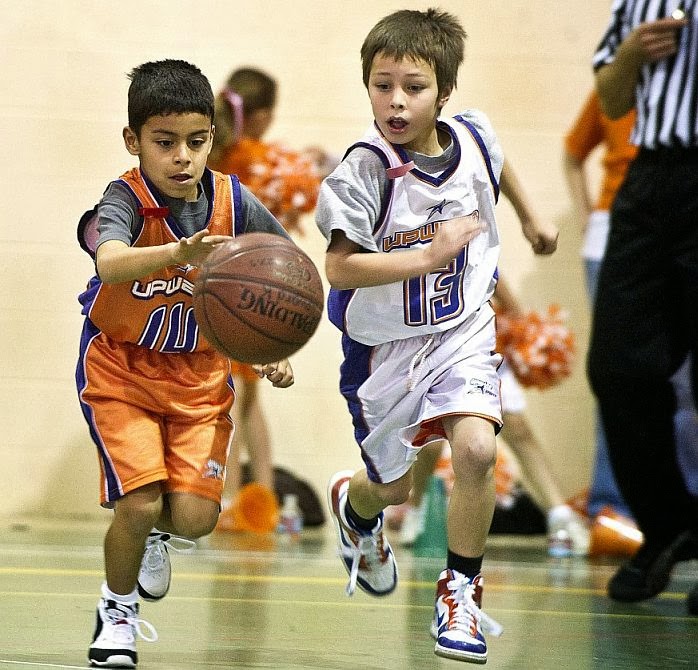 Yes, your difficult drill may look great in practice, but as mentioned in point two, if it doesn't have a clear application in games, then it (the drill) is really more for you than for your players.
Yes, your difficult drill may look great in practice, but as mentioned in point two, if it doesn't have a clear application in games, then it (the drill) is really more for you than for your players.
4) The fourth biggest mistake is taking away the enjoyment of training and sports, often in the name of winning. Some well-meaning youth coaches try to dampen or extinguish the competitive fire of their players by focusing too much on short-term outcomes. Enjoy the ride and let your players do the same! We want the long-term sporting development of our players, on and off the court!
Henry Barrera - ShOOT360
1. No training planning, 2. They say much, 3. There is no sufficient development of the individual fundamental technique of the ball and the throwing technique
James Gels - Coaches Clipboard
000
very a common mistake is that children's trainers talk too much. Players get bored and don't learn anything.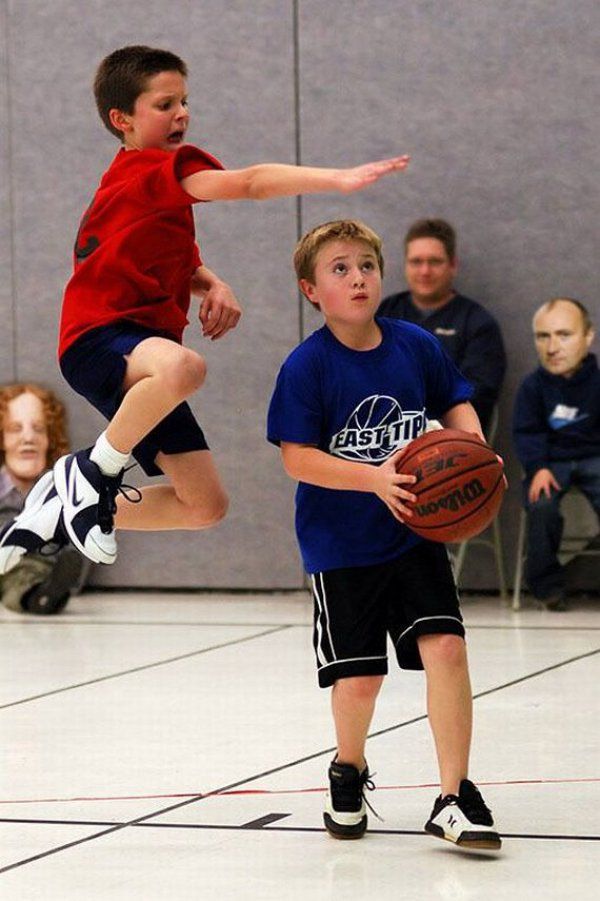 When I train in high school, I always say that a good practice is when the players are talking (communicating) and the coach is not heard.
When I train in high school, I always say that a good practice is when the players are talking (communicating) and the coach is not heard.
Jeremy Russotti – 1Percent Club
It seems like every practice I've watched involves mostly double stride columns after the dribble, free throws and double basket play. There is nothing wrong with these drills, but it is rare to see drills that include elements in which players will make decisions. Therefore, I think youth coaches should add more IQ exercises that involve using their brains to make decisions. Simple 3v2, 4v3 drills will really help players think about how to attack and defend. These drills force players to think about how to make an assist (and an accurate pass), but also force players to learn how to defend properly. Another area that coaches should focus on is what to do when a player touches the ball. Young players must catch, pass, or throw the ball into the basket as many times as possible in practice. The more reps they get in these areas, the more they will improve. Taking team shots (free or spotted), or just playing 5-on-5, doesn't give players enough ball possession to develop.
The more reps they get in these areas, the more they will improve. Taking team shots (free or spotted), or just playing 5-on-5, doesn't give players enough ball possession to develop.
Jim Burson - JimBurson.com
There are some really obvious mistakes that are not limited to coaching kids, such as being unorganized and not focused. Assuming that many of the youth coaches are not professionally trained, there are many dangers in their ignorance. Some of my immediate thoughts are:
• Not organized,
• Coach and players as a group and not as individuals,
• Preparation for practice and play is not focused;
• Knows the difference between too much practice and not enough practice; need to know the emotional, physiological, conditioning and maturity levels of players in order to assess this on an ongoing basis,
• Worry too much about winning rather than trying to make players better,
• Pays no attention to anything but X (defense) and O (attack),
• Does not teach children how to win and lose with character, class and perspective,
• Not only develop leaders; instead of having the best player do everything, have different kids stepping up and taking turns taking the lead in drills, eg
• Not teaching players how to communicate on and off the court; in the gym and away from the training room,
• Do not work on developing the internal motivation of the players, which is best done by supporting, encouraging, listening to them; it can't be that the players just do what they say,
• Not stressing the importance of studying alongside playing basketball and how studies and sports interact,
• Forgetting what makes kids better at basketball helps them be better at life; although this can happen naturally or as a by-product of training, learning when it is planned and built into the program,
• Playing with a select few, even unintentionally, often with their own child,
• Thinking their coaching is the only what makes children better; they forget that you cannot force someone to become better - you can only influence them so that they themselves want to become better,
• Doesn't know the real reasons why he coaches - are they right?
Joe Haefner – BreakThrough BasketBall
1.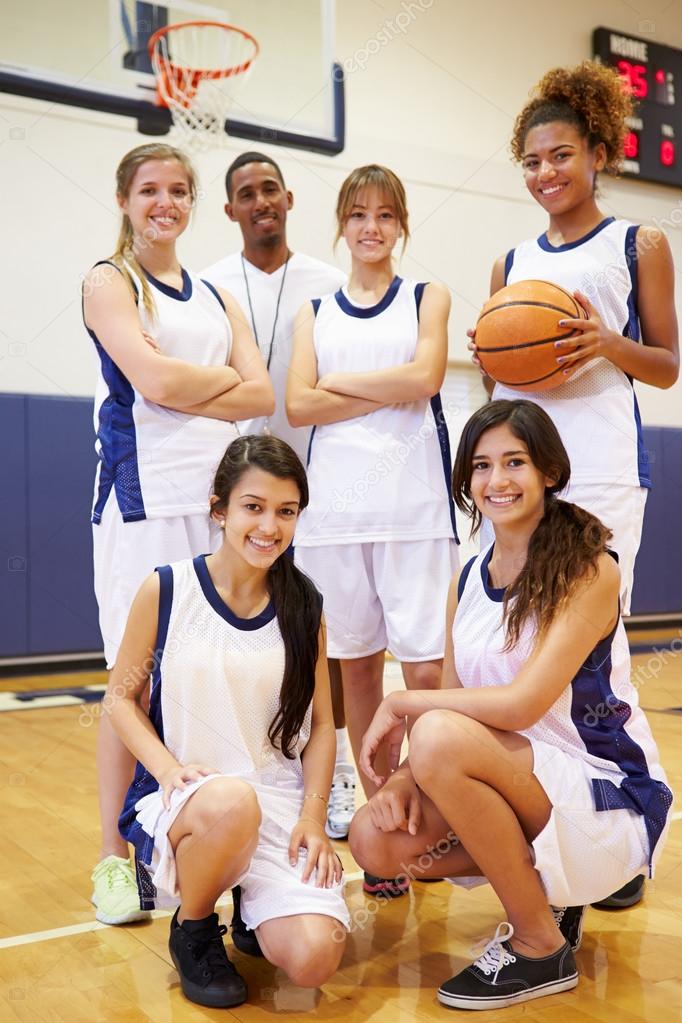 Focus on offensive combinations rather than teaching them how to play.
Focus on offensive combinations rather than teaching them how to play.
2. Players standing in long lines.
3. Have a plan for what to do in training with a short and long term.
4. Run without a ball to improve their physical condition when they could do the same with balls while developing basketball skills.
5. Do not separate training in team offense and drills for developing individual technique skills. You can do it at the same time.
6. The monkey sees. The monkey does. Just doing an exercise that they saw on YouTube or on the Internet, without really focusing on the purpose of the exercise. It's not what you do... it's how you do it. a. What are you trying to improve? What is your goal? b. Why are you trying to improve this? Is it suitable for this age? Are there more important things to train? Will it benefit them in the future? in. How do you develop certain skills? Will this exercise fulfill your purpose? 7. Creating a high stress environment with yelling and constant criticism, not realizing that the highest level of learning occurs when stress levels are lower. 9Jordan Delp - Pure Sweet Basketball children how to play. Instead of focusing on winning a 5th grade basketball tournament, we should focus on teaching these kids to be successful later in their career by focusing on ten areas of development.
9Jordan Delp - Pure Sweet Basketball children how to play. Instead of focusing on winning a 5th grade basketball tournament, we should focus on teaching these kids to be successful later in their career by focusing on ten areas of development.
1 - Throwing technique. 2 - Dribbling with both hands / against pressure. 3 - Passing the ball with both hands / against pressing. 4 - Throws with both hands when passing / against pressing. 5 - Basic footwork, triple threat reading. 6 - Creation of SB. 7 - Moving without the ball. 8 - Protective stand. 9 - Defensive positions, reading screens, helping the helper. 10 - Be a real teammate. If our young basketball players have spent their time working in these ten areas from their earliest ages, I believe your game will be at the highest level. This means that training time must be purposeful, it must be planned, and it must be efficient. Young gamers spend too much time playing games and not working on their skills enough. Children naturally love to compete and we can use practice time to encourage their competitiveness - you won't need to play 5 games a weekend (where losing or winning doesn't really matter), you will need to spend more time in practice room by developing your game and your players.
Lamar Hull – Inspiration Basketball
Some of the common mistakes I see are: a team with the ability to fight,
• Do not focus on the basics of individual technique,
• Performing an exercise without explanation and demonstration,
• Do not pay any attention to defense,
• Make no effort to live like a team
Lemar Griffin – Grind Time Hoops
What I mean is, if you don't train the things you want your players to be able to do at game speed in game situations, how can you expect them to pass, shoot, dribble in games? The answer to this question is simple, I believe that the lack of training exercises at game speed and imitation of game situations is a common mistake of youth basketball coaches.
Mark Adams – Mark Adams BasketBall
1. Not spending enough time teaching/explaining the basic principles of fundamental technique.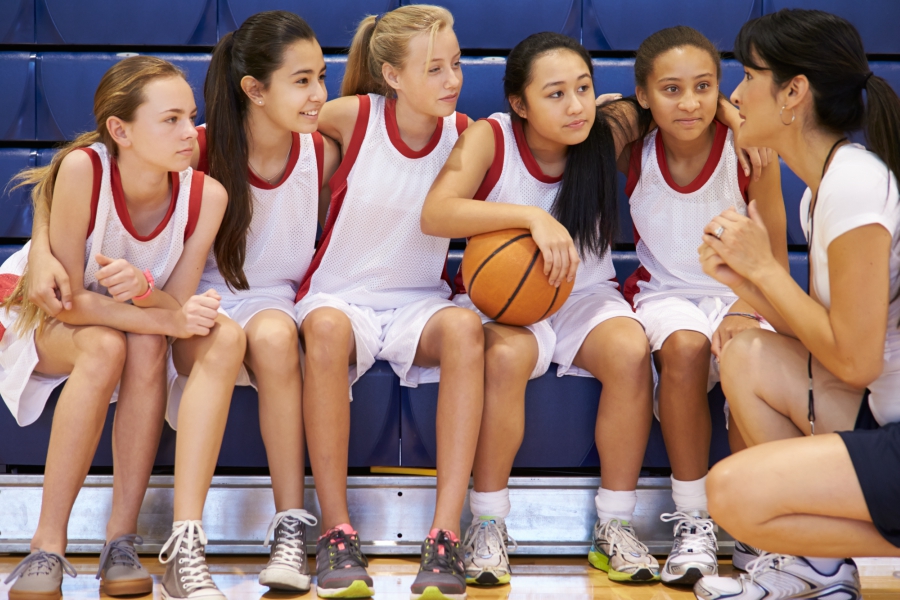 2. Spend too much time learning offensive play patterns instead of teaching kids "how to play." 3. Too much time is spent learning zone defense when kids should be learning the basics of personal defense. 4. In general, there are too many games played in children's basketball and there is too much emphasis on winning. Children should learn how to play this game and have fun.
2. Spend too much time learning offensive play patterns instead of teaching kids "how to play." 3. Too much time is spent learning zone defense when kids should be learning the basics of personal defense. 4. In general, there are too many games played in children's basketball and there is too much emphasis on winning. Children should learn how to play this game and have fun.
Matt Kramer – Beyond the Hardwood
1. Teach the kids to play the personal defense first, before learning the zone. For me, this is the biggest one. I watched a bunch of kids basketball games last winter because my son plays in the 9 and 10 year old league. In almost every game I've watched, teams have played zones. This inhibits the growth of players on both sides of the ball. Defenders don't learn how to defend against anyone, and attackers don't know how to play zone defense. This is bad for everyone. Teach player player defense.
2. Teach kids how to attack without the ball. The world has gone crazy with screens and rolls. It's great at a professional and high youth level, but when the whole game is screens and rolls at a children's level, then two play and the remaining 3 children on the site as in a parking lot, as spectators. Dribbling kills experience for 90% of players on the court and pick and roll requires a lot of dribbling. Teach your kids how to rush to the basket and even screen the ball if they already have an idea how to do it.
The world has gone crazy with screens and rolls. It's great at a professional and high youth level, but when the whole game is screens and rolls at a children's level, then two play and the remaining 3 children on the site as in a parking lot, as spectators. Dribbling kills experience for 90% of players on the court and pick and roll requires a lot of dribbling. Teach your kids how to rush to the basket and even screen the ball if they already have an idea how to do it.
3. Don't waste time on tricky offensive throw-ins that are inaccessible to children. Every time you waste time teaching kids throw-in patterns, you are wasting time that could be spent teaching kids to play man-man defense and teaching them to play offense without the ball. If you really want to help your players improve, teach them individual technique skills.
Mihai Raducanu – No Limit Performance
Coaches should focus 100% on skill development. Ages 6-9 - Children need to learn motor skills.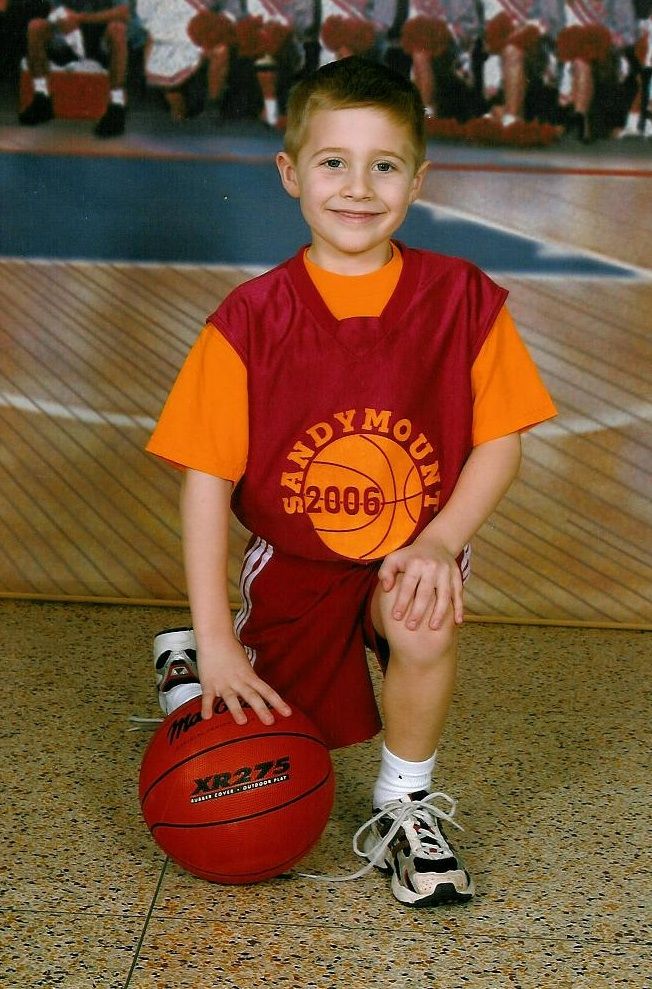 Ages 9-12 - Children must learn to train/play the right way. Learn the basic skills of the game. Ages 12-16 - Children should continue to learn how to exercise. More strategic specific model here. Implementation of technical and tactical concepts. Ages 16-18 - Train to win. Emphasis on winning. Other game concepts. Expanded skill development. Age 18+ - Train to win. Everything you need to play the game must be fully installed. Players will receive a higher level of education in everything. Lots of mental preparation.
Ages 9-12 - Children must learn to train/play the right way. Learn the basic skills of the game. Ages 12-16 - Children should continue to learn how to exercise. More strategic specific model here. Implementation of technical and tactical concepts. Ages 16-18 - Train to win. Emphasis on winning. Other game concepts. Expanded skill development. Age 18+ - Train to win. Everything you need to play the game must be fully installed. Players will receive a higher level of education in everything. Lots of mental preparation.
Mike Costello - Pure Sweat Basketball
I think one of the common mistakes in kids training is having a lot of 5-on-5 games. Many children in training do not touch the ball much for their development. I prefer 3-on-3 games in which each child touches the ball.
Wow. Thank you! Many thanks to every specialist who took time out from their busy day to answer this question for all of us. I've definitely learned a lot about what's going on in youth basketball through the experts' answers, and I hope you've heard a lot from this article too.